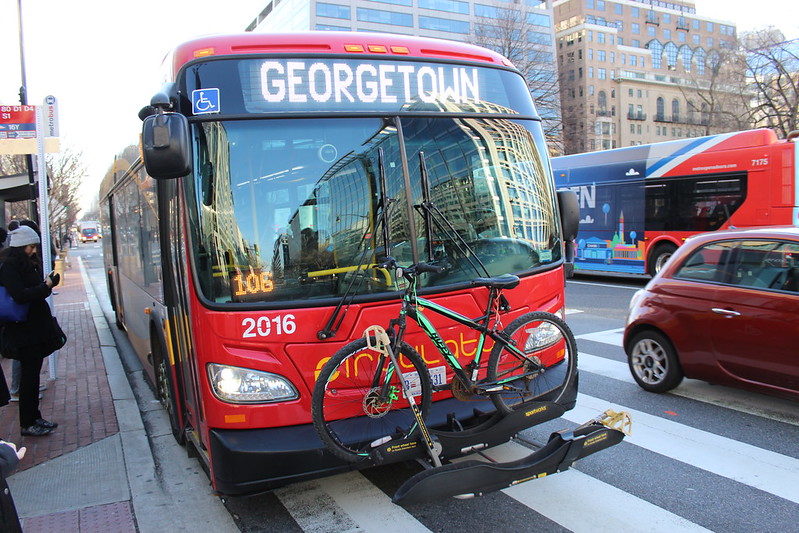For immediate release
April 15, 2020
Contact: Stewart Schwartz
703-599-6437 (cell)
stewart@smartergrowth.net
Streets for People – for Health and Safety During COVID-19 and Beyond
Today, the Coalition for Smarter Growth urged local governments to take action to provide more public street space for people walking and biking and using other modes of micro-mobility. “If health authorities permit people to be outside, provided they ensure a minimum of 6-foot physical spacing, then local governments need to provide more space for people to walk and bike safely,” said Stewart Schwartz, Executive Director of the Coalition for Smarter Growth.
“In many communities, people are finding that the sidewalks are too narrow and that they need to walk in the streets to maintain safe physical distance. Some neighborhoods need but lack nearby parks, meaning that public space on the streets becomes particularly important. In the suburbs, many streets completely lack sidewalks,” said Schwartz. “This is not just about walking for health. It’s also about creating safer places for essential workers who need to get to work by walking, biking, or taking the bus, and about people who need to pick up or have delivered food and medicine,” said Schwartz.
“With the leadership of our local elected officials, we believe action can be taken to close streets to car traffic and expand areas for safe walking and bicycling. We know other cities around the U.S. are doing so, including Oakland, Boston, Minneapolis, and Denver. DC, Baltimore, Richmond, and our suburban jurisdictions can and should take similar action,” said Schwartz.
“Meanwhile, with car travel down dramatically, we can not only see how much public space we have given over to motor vehicles, but also how much pollution is generated by driving,” said Schwartz.
According to INRIX, personal vehicle trips are down over 40% nationwide, and roads in DC and the surrounding suburbs are noticeably less trafficked. Meanwhile, metropolitan regions around the world are seeing major reductions in air pollution, including particularly harmful PM2.5 particulate pollution from vehicles that can lodge deep in the lungs. PM2.5 pollution has long contributed to a number of chronic respiratory illnesses, and a Harvard University study suggests a causal connection between PM2.5 air pollution and deaths from coronavirus. “This should spur action coming out of this crisis to address driving and pollution,” said Schwartz.
“The crisis gives us the opportunity to envision and create a world with less traffic, noise, and dangerous air pollution. We hope it inspires people and our elected officials to see the livability advantages in creating an extensive network of dedicated, protected bike lanes, wider sidewalks, trails and greenways, and dedicated bus lanes. Combine these with rapid electrification of bus fleets and personal vehicles, and our communities will be cleaner, healthier, quieter and more livable,” concluded Schwartz.
###


